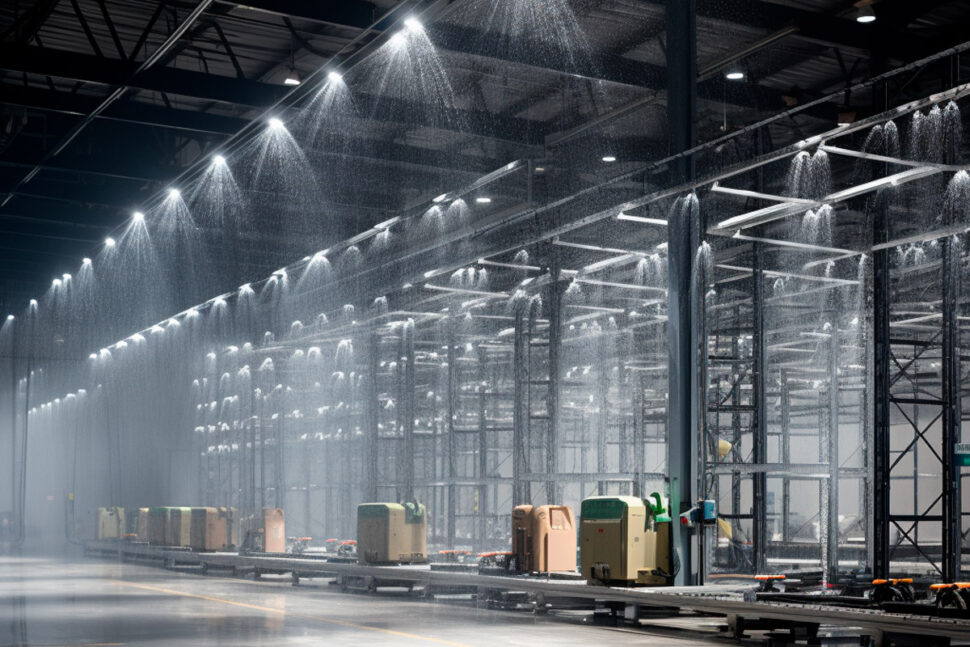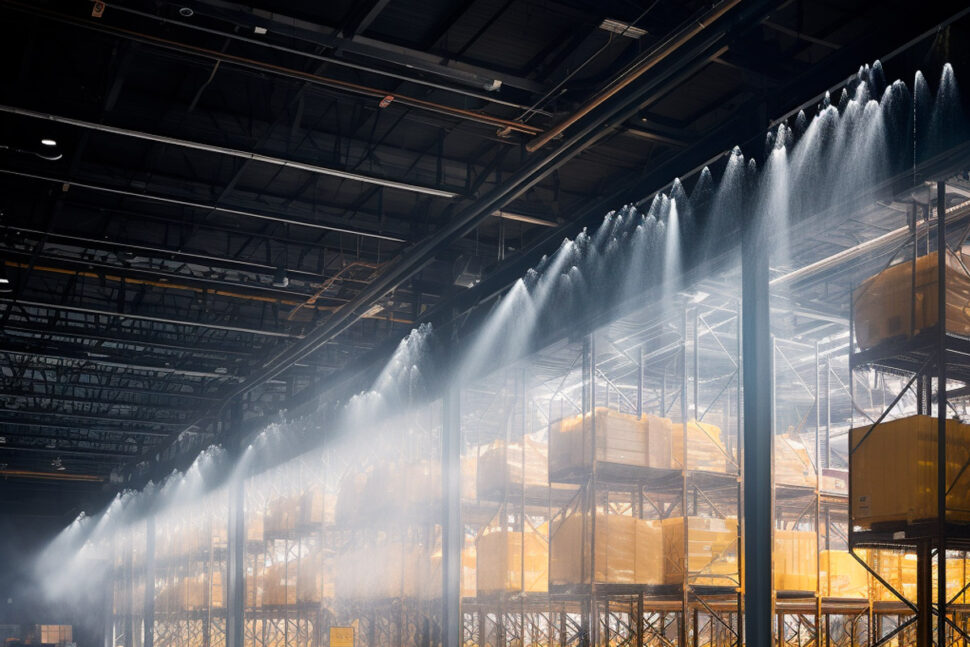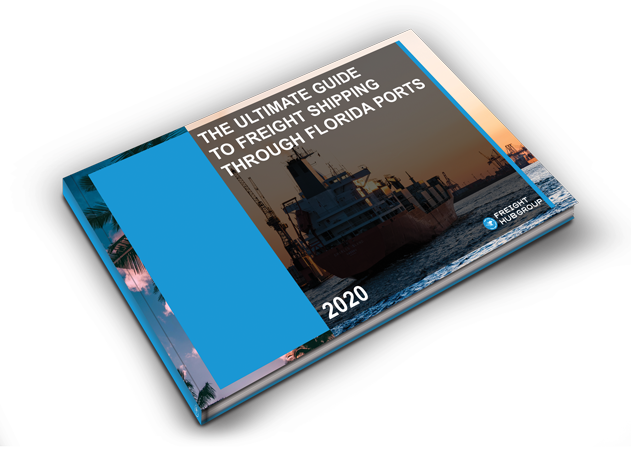Different Sprinkling Solutions for Warehouse: Safety First

In the vast realm of warehouses, amid stacks of merchandise and ceaseless operations, there’s an often-overlooked sentinel: the warehouse sprinkle system. This guardian, though unobtrusive, plays an essential role in ensuring that goods and personnel are shielded from potential calamities. Delving deeper into the sprinkle universe, one quickly realizes its intricate design and indispensable function in today’s commerce arenas. With a sprinkling of technology and innovation, these systems stand robust against challenges, ensuring our warehouses remain resilient and protected. Welcome to the world of warehouse sprinkles – where safety is just a sprinkle away.
Let’s get straight to the point. Selecting the appropriate sprinkler system is a paramount task when dealing with warehouse spaces. Data from the National Fire Protection Association (NFPA) reveals that warehouse fires are alarmingly common, with approximately 1,410 incidents annually. Simplified, this translates to about 3 to 4 fires every single day.
Types of Sprinkler Systems for Warehouses
Sprinkler systems are designed to address different requirements based on the environment they’re used in, the types of fires they might encounter, and the assets they’re meant to protect. Here are the primary types of sprinkler systems:
- Wet Pipe Systems:
- Most common and simplest form of a sprinkler system.
- Pipes are constantly filled with water.
- When a sprinkler head is activated by heat, water immediately discharges from that head.
- Dry Pipe Systems:
- Pipes are filled with pressurized air or nitrogen, rather than water.
- Water is held back by a control valve.
- When a sprinkler head is activated, the air releases first, and then the valve opens to let water flow into the piping and out through the activated head.
- Commonly used in places where there is a risk of water freezing, like in unheated warehouses.
- Pre-Action Systems:
- Similar to dry pipe systems in that water doesn’t enter the pipe until a specific action occurs.
- Require a “pre-action” trigger, such as a smoke detector, to activate before the sprinkler head opens.
- Used in places where accidental activation can be particularly damaging, such as data centers or libraries.
- Deluge Systems:
- All sprinkler heads are open and pipes are empty in the resting state.
- When a fire detection system is triggered, water floods the entire system and pours from all sprinkler heads.
- Commonly used in places with high hazard contents, like chemical storage or processing facilities.
- Foam Water Sprinkler System:
- Combines water and a foaming agent.
- Specifically designed for high-hazard areas where fires can be particularly challenging to control, such as flammable liquid storage.
- Water Mist Systems:
- Uses fine water mist to control, suppress, or extinguish fires by cooling the flame and surrounding gases and displacing oxygen.
- Often used in spaces with sensitive equipment where water damage could be a concern.
- Anti-Freeze Systems:
- Designed for areas where pipes could freeze.
- Mixes an antifreeze solution with water to prevent freezing.
- Standpipe Systems:
- Primarily designed for firefighter use.
- Provides a means to supply water to hose connections strategically located throughout a building, particularly in large or multi-story buildings.
The Underrated Importance of Sprinkler Systems

Navigating the vast landscape of a warehouse, with its towering shelves of goods and maze-like aisles, one might miss the silent overseers embedded overhead: the sprinkler systems. These mechanisms are not just pieces of infrastructure but are vital lifelines, holding the fort against unforeseen fire mishaps.
Why, you ask, is such emphasis placed on these sprinklers? Here’s the crux of it:
- A Matter of Life and Safety: Beyond property and goods, these systems safeguard the invaluable – human life. When fires erupt, sprinklers play a pivotal role in curtailing the blaze, providing a window for workers to evacuate.
- Asset Guardianship: With inventory worth millions often housed in warehouses, a fire can spell financial disaster. Sprinklers intervene in these critical moments, limiting potential damages and saving businesses from colossal losses.
- Operational Continuity: A fire doesn’t merely torch goods; it can bring operations to a grinding halt. Sprinklers ensure that any disruption is minimal, paving the way for faster recovery and resumption.
- Compliance and Reputation: Regulatory bodies often mandate sprinklers, recognizing their importance. Being compliant not only avoids legal pitfalls but also boosts a warehouse’s reputation for prioritizing safety.
- Insurance Implications: Insurers often look favorably upon warehouses equipped with robust sprinkler systems, translating to potential premium reductions. Conversely, the absence could skyrocket costs or even result in coverage denial.
- A Beacon of Assurance: For employees working within, knowing that there’s a system in place, ready to combat fires, instills confidence and a sense of security.
In this intricate dance of commerce and logistics, warehouse sprinklers emerge not as mere participants but as pivotal players. They stand as silent custodians, ensuring the show goes on, even when the unexpected strikes. Join us as we delve deeper into the world of these guardians, understanding the technology, designs, and innovations that make them the unsung heroes of our warehousing universe.
How much is Cost Warehouse Sprinkler Systems
When contemplating the safety and integrity of a warehouse, cost considerations play a pivotal role. The expense of installing a sprinkler system varies depending on several factors: the size of the warehouse, the complexity of the system, the type of commodities stored, and local regulations.
For warehouses storing standard goods without specific hazards, a basic sprinkler system might suffice. However, if the inventory includes items prone to heightened fire risks, such as volatile chemicals or electronics, the initial outlay may increase due to the need for more advanced systems like the ESFR or foam-based alternatives.
Additionally, regional regulations and building codes can impact costs. Some regions mandate the inclusion of certain features or technologies, potentially increasing initial expenses. However, it’s vital to view this as a long-term investment. While the upfront cost might be significant, the potential loss from a catastrophic fire—both in terms of property damage and operational disruption—can be exponentially higher.
Furthermore, insurance implications cannot be overstated. A robust sprinkler system can lead to reduced insurance premiums, translating to savings in the long run. Conversely, the absence or inadequacy of such a system can elevate premium costs or even risk denial of coverage.
Lastly, remember that the investment isn’t a one-off. Regular maintenance, inspections, and potential upgrades are essential to ensure the system remains in prime condition. Over time, these additional expenses contribute to the total cost of ownership.
How to Choose the Ideal Sprinkler System for Your Warehouse?
Warehouses holding commodities vulnerable to fire, such as those categorized as Class III and IV, should contemplate the adoption of rapid-response sprinkler solutions like the ESFR and Quell systems. Conversely, those exposed to greater fire hazards might benefit from the proactive installation of foam-based systems.
Central to this decision is your insurance coverage. It offers insights into which system provides optimal protection and outlines your coverage specifics.
Diving deep into warehouse safety and optimization doesn’t have to be a solo endeavor. At iOptimize Realty®, our team of dedicated Tenant Representatives is ready to assist you in making pivotal commercial real estate decisions. With our three-decade-long market expertise dedicated solely to tenant representation, we’re here to guide you—be it in selecting the best sprinkler setup or negotiating terms with your property owner.
Recent Posts
Watch our Podcast

THE ULTIMATE GUIDE TO FREIGHT SHIPPING THROUGH FLORIDA PORTS
When it comes to ocean freight shipping in Florida, there is a lot to know to ensure you follow the appropriate steps when shipping into and out of Florida Ports.
Just enter in your email address and receive your FREE E-Book in minutes!